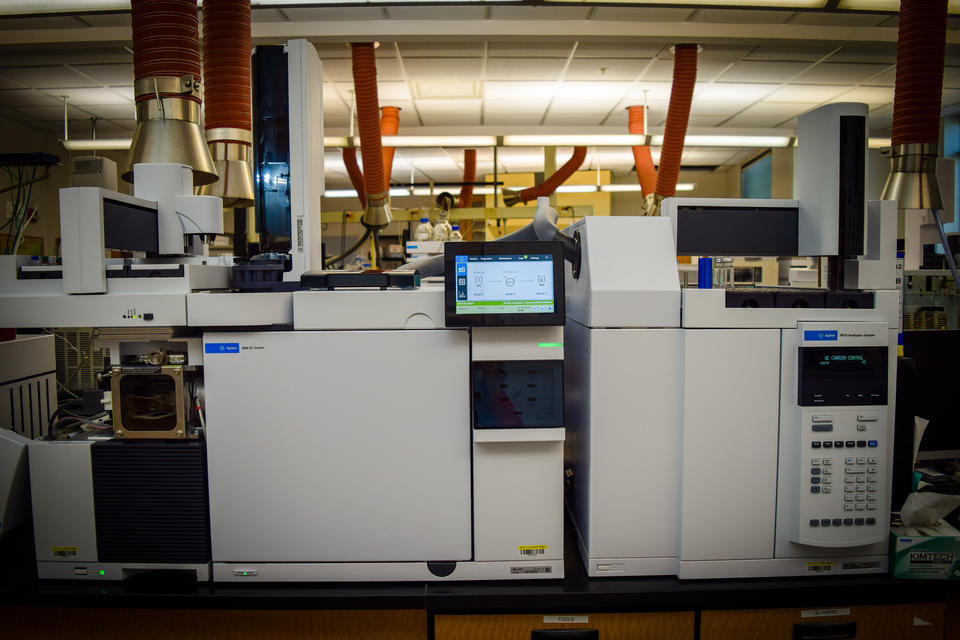Mass Spectrometry Instrument Lab
Mass spectrometry (MS) is a chemical detection technique that utilizes the differences in the mass-to-charge ratio of ion fragments to analyze samples. The Biochemical and Exposure Science Group (BESG) uses MS in combination with different types of chromatographic separations to determine chemical contaminants, clinical biomarkers, proteins, and metabolites in a multitude of matrices.
Gas chromatography mass spectrometry (GC-MS) and liquid chromatography mass spectrometry (LC-MS) offer different capabilities that can be exploited for chemical analyses of different types of samples. GC-MS involves separating volatile analytes using a gas flow system and detection with MS. The BESG maintains capabilities in GC-MS, tandem GC-MS (GC-MS/MS), and pyrolysis GC-MS to measure semi-volatile and volatile organic compounds, clinical biomarkers, plastic additives, polymers, and components of fossil fuels.
In contrast, LC-MS utilizes a liquid mobile phase which is removed prior to detection in the mass spectrometer. The BESG maintains instrumental capabilities in LC coupled to tandem mass spectrometry (LC-MS/MS) and LC-high resolution mass spectrometry (LC-HRMS) to enable the analysis of polar analytes that are not measured with gas chromatography. LC-MS techniques permit the determination of proteins, hormones, metabolites, and industrial products such as bisphenol A (BPA), pesticides, and per- and polyfluorinated alkyl substances (PFAS).
BESG’s work on measurements and methods support measurements in real-world matrices, the circular economy, manufacturing, biotechnology, and healthcare.




Contacts
-
(843) 460-9878
-
(843) 460-9841
-
(301) 975-4756
-
(843) 460-9894
-
(843) 460-9796
-
(843) 762-8808
-
(843) 460-9789

